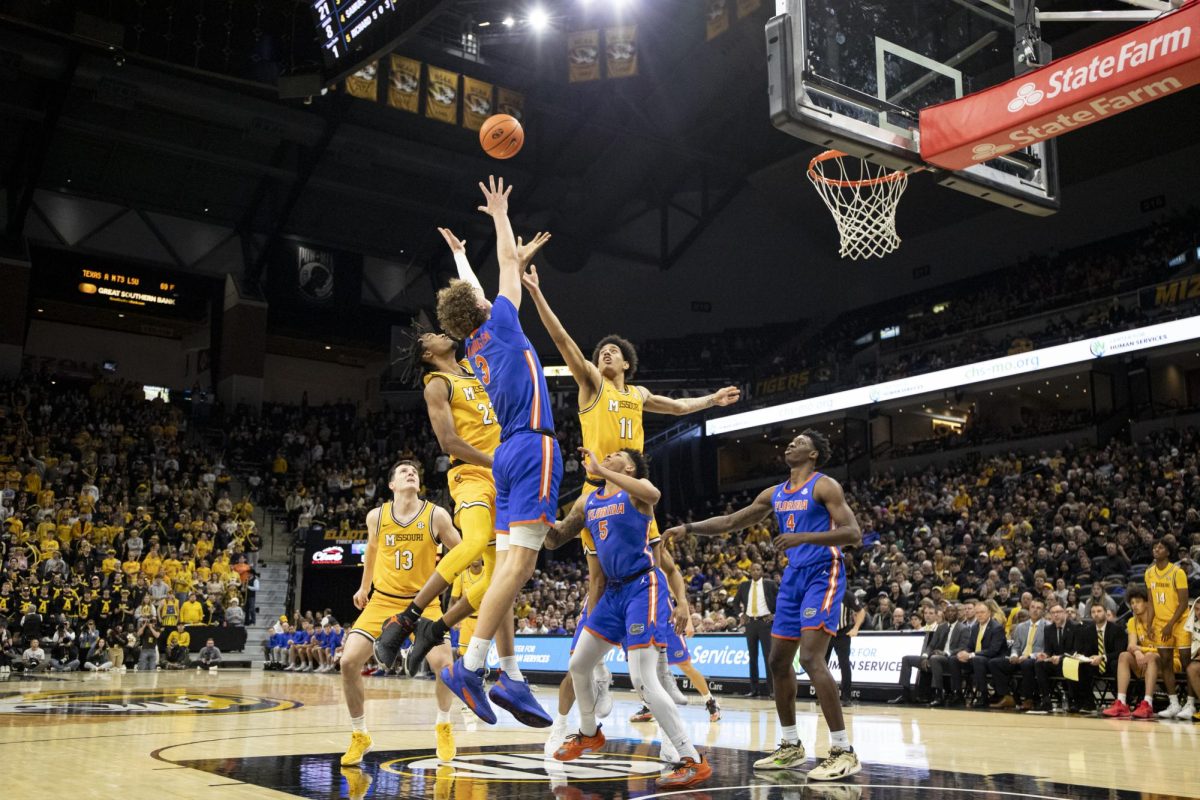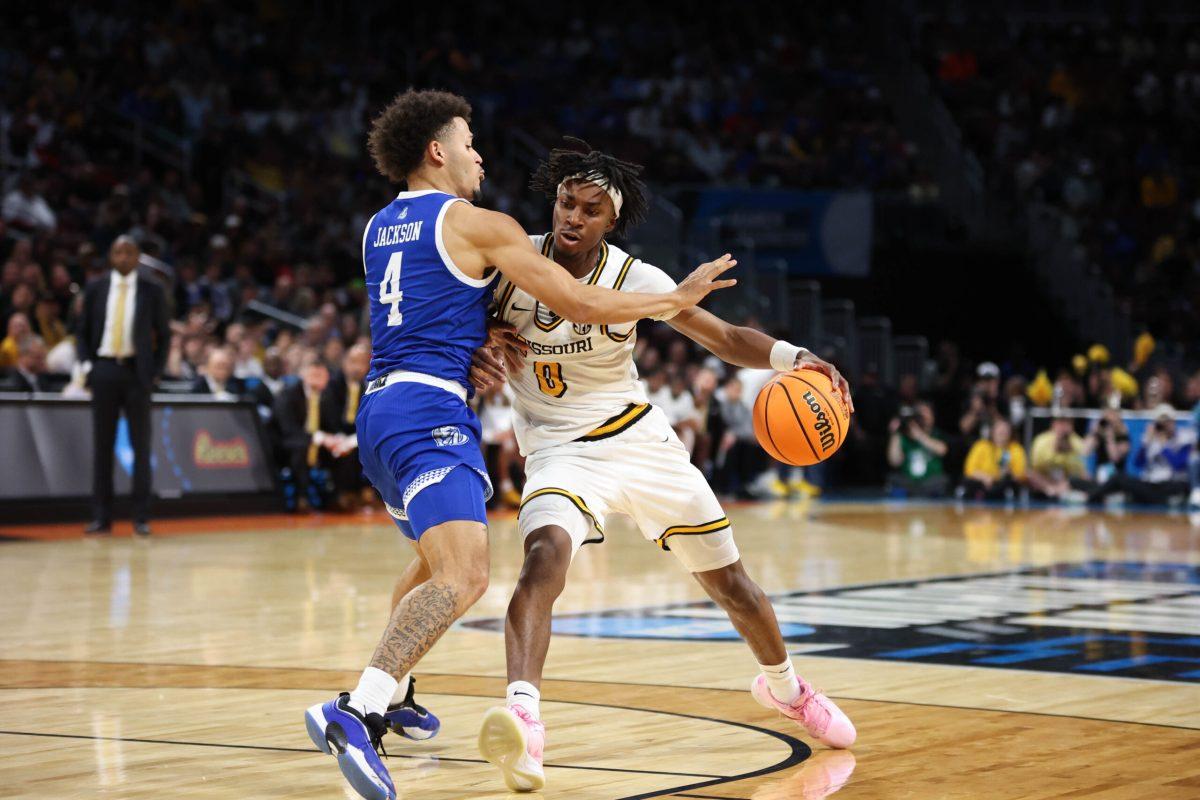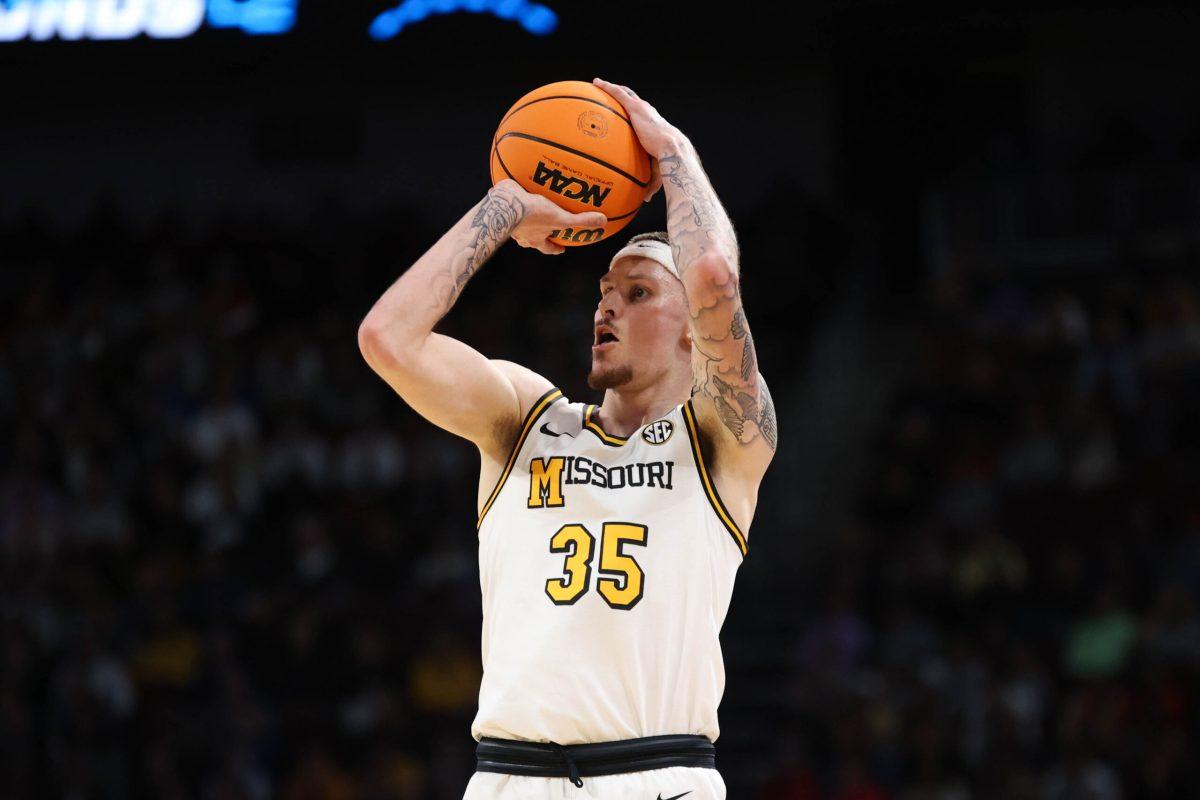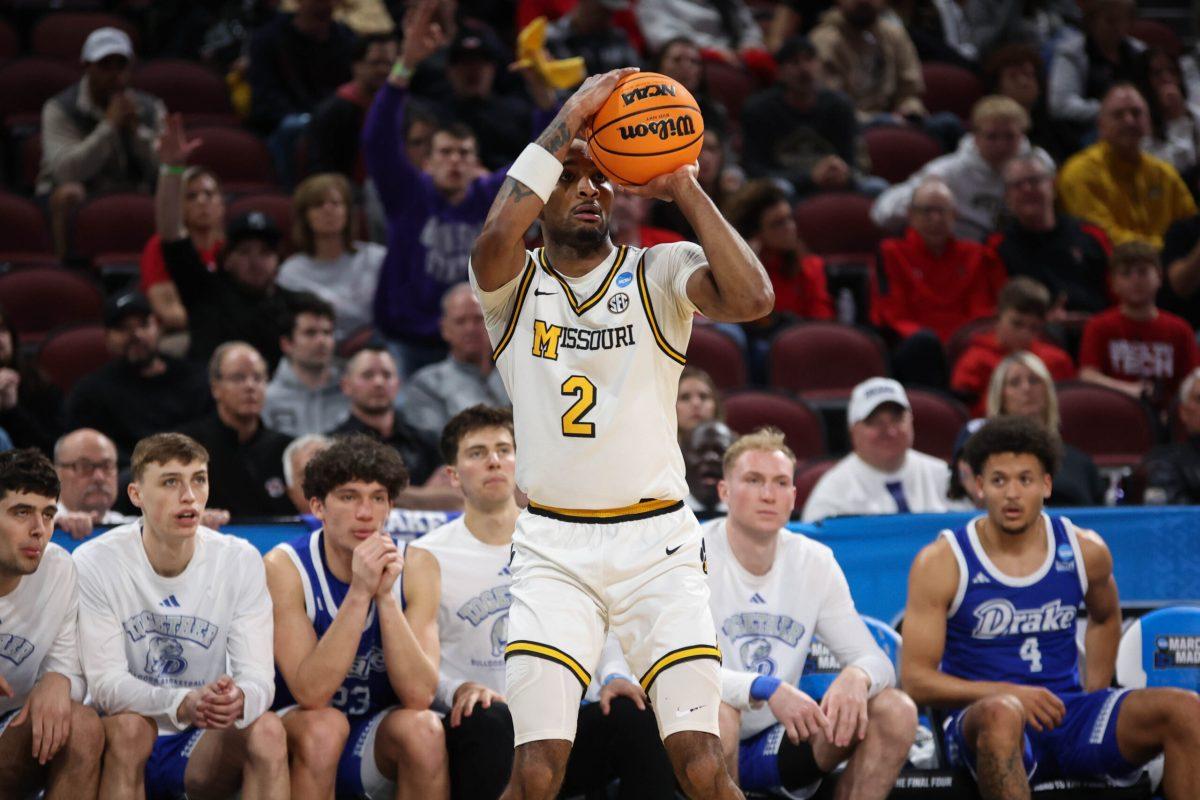Missouri men’s basketball is still winless in conference play, but here’s what we can take away from the losses.
Another week of SEC basketball has come and gone.
In a week filled with surprises such as No. 8 Auburn losing twice to unranked opponents and No. 6 Kentucky losing to unranked South Carolina, one thing remained consistent: Missouri ended another week winless in conference play.
Dennis Gates’ squad fell on Jan. 23 to Texas A&M by a score of 63-57 and ended the week on Jan. 27 losing by a score of 72-64 at the hands of South Carolina.
The losses elongated Missouri’s losing streak to seven, winning just one of their last 11 contests.
However, there are a few signs of hope on the horizon.
Tamar Bates and Sean East II are the Tigers’ offense
All season long, graduate Sean East II has been the driving force of the Missouri offense. He’s averaging a stellar 15.6 points per game and the evolution of his all-around scoring ability has been one of the few bright spots this season.
But as of late, the Tigers’ offense which seemed like a one-man show early in the season has morphed into a two-headed monster now including junior Tamar Bates.
Bates averaged 7.1 points per game in his team’s first 10 games of the year, mostly primarily featuring as a solid contributor off the bench. However, in the Seton Hall game, a switch was seemingly flipped for the Kansas City native. In the 10 games since his homecoming game against the Pirates, Bates is averaging 19.6 points per game, highlighted by a 36-point explosion against Florida.
East’s early season dominance had calmed down while Bates was heating up, with neither player being able to put together strong performances at the same time. Until this week.
East and Bates combined for 33 of Missouri’s 57 points in the loss to Texas A&M, and 37 of their team’s 64 points in the loss to South Carolina, meaning 57.8% of the Tigers’ scoring came from the duo.
While having two high-powered scorers is a luxury for any college team, it loses some of its appeal when the supporting cast around them struggles. The rest of the Tigers shot 8/27 in the A&M loss, and although they improved slightly against the Gamecocks shooting 9/26, it still wasn’t enough for a win.
If Missouri wants to salvage anything from this conference season, the supporting cast around East and Bates must give the duo the boost they need in order to get over the hump and add a one into the win column.
Perimeter defense and lack of discipline continue to plague Missouri
The progression of basketball in the last two decades can be largely attributed to one type of play: the three-point shot. When coaches are recruiting high school players and NBA franchises scout out prospects, a common red flag that can quickly dissolve interest in a player is their lack of a consistent 3-point shot.
This movement of a heavier reliance on the three-pointer throughout the college game also shifted the ability to defend an opponent’s perimeter attack to be just as important. Since the schedule flipped to SEC play, Missouri has been unable to do this at a high rate.
In four of Missouri’s seven conference games thus far, they have allowed their opponents to shoot 40% or higher on three-point attempts. This weak point was exposed once again in Saturday’s loss to South Carolina. The Gamecocks entered the game shooting 34.3% from three on the year, but Missouri allowed them to hit on an even 40% of their attempts.
Even when Missouri’s defense is able to slow opponents down from long range, their lack of defensive discipline affords their opponents other opportunities to score. In the loss to Texas A&M, the Tigers allowed the Aggies to hit just six of their 27 shots from deep. But points that A&M missed out on in three-point misses, they made up for in free throw attempts.
Missouri sent their opponents to the line 37 times in the contest and were only able to make it there 10 times themselves. The game represented just one of the five times in SEC play that opponents have out-shot the Tigers at the free throw line. Missouri also leads the SEC in fouls per game, out-fouling their opponents in six of the first seven conference games.
Falling just short
This was the mantra of former Missouri head coach Cuonzo Martin during his time in Columbia before Gates took over. While many fans don’t miss much from that era, Martin’s mission statement was never as fitting for any of his teams as it would be for this year’s.
All of Missouri’s losses in the conference have followed the same formula. Play a back-and-forth competitive game with the opponent for 35 or so minutes before having the dagger put in by the opposition in the final minutes.
That trend continued both in College Station and Columbia, South Carolina, as both games saw the Tigers keep the game close all night long, just to run out of gas in the game’s crucial moments.
However, help may soon be on the way in the form of graduate Caleb Grill. Grill has been out since early December with a wrist injury, and Gates said he could return in the next two weeks. Grill was a consistent source of energy for Missouri before his injury.
The guard still leads the team in rebounds per game at 5.8 and has been a spark in a few games this year, most notably the 20-point comeback win at Minnesota. The potential boost that Grill has proved to be able to provide could be just what his teammates need to give them a boost in a game’s final minutes.
Edited by Grace Ainger | [email protected]
Copy edited by Sterling Sewell | [email protected]
Edited by Genevieve Smith | [email protected]







